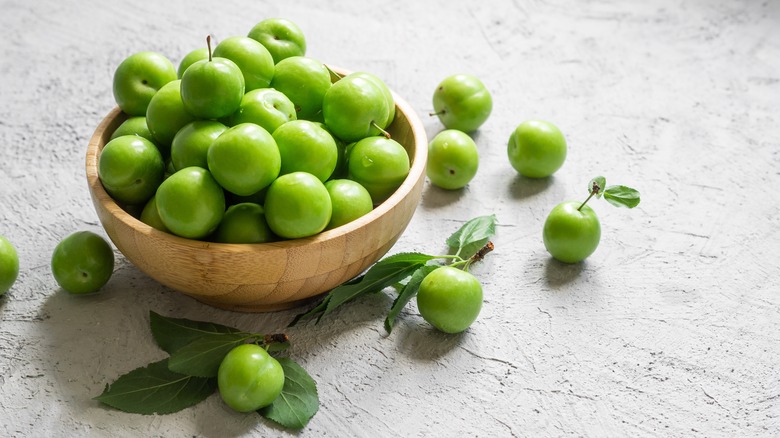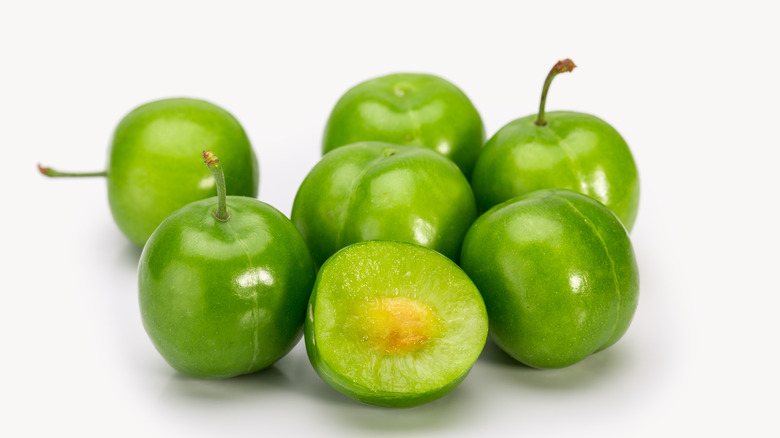The Sugary French Plum Fit For A Queen
One of the singular pleasures of traveling is discovering and eating fresh fruits that grow locally to the region. If you find yourself meandering around France during summer, don't miss out on visiting a market to marvel at all of the bounty ripe for the picking, where merchants will be more than happy to boast about their top-of-the-line produce and fruit. For those with an exceptionally sweet tooth who also love plums, there is a local French variety that reigns above the rest. If you spot tiny, oval-round plums that are just smaller than a golf ball, you've stumbled upon the jackpot of sweet plums: reine claudes.
Don't let their light green color fool you into thinking these plums aren't ripe or sweet: Each reine claude contains a whopping 18% sugar, according to food writer David Leibowitz. And although the French greenage is "universally acclaimed by experts as the finest of plums," according to the NY Times, it is hard to come by as it's available only for a short time in August (via David Leibowitz).
This sugary plum was named after Queen Claude
According to Taste France, like many other fruits and vegetables, the reine claude plum first arrived to Europe by way of the Romans. It was during the Middle Ages and then the Renaissance that plums gained in popularity. When the greenage gained traction during the 16th century, the reigning king at the time, King Francis I, named the succulent and sweet tiny fruit for his queen, Claude, one of France's most popular queens (via Behind the French Menu).
The best reine claudes grow in the region of the Pays de la Loire and in Nouvelle-Aquitaine and can be used in desserts like a clafoutis or made into a chutney. But the best way to enjoy the fruit's sweet flesh is to bite into it directly to enjoy the fresh and unique, sugary taste. Don't let the high sugar count scare you: This french plum is also packed with good-for-you antioxidants and minerals (via Taste France).

